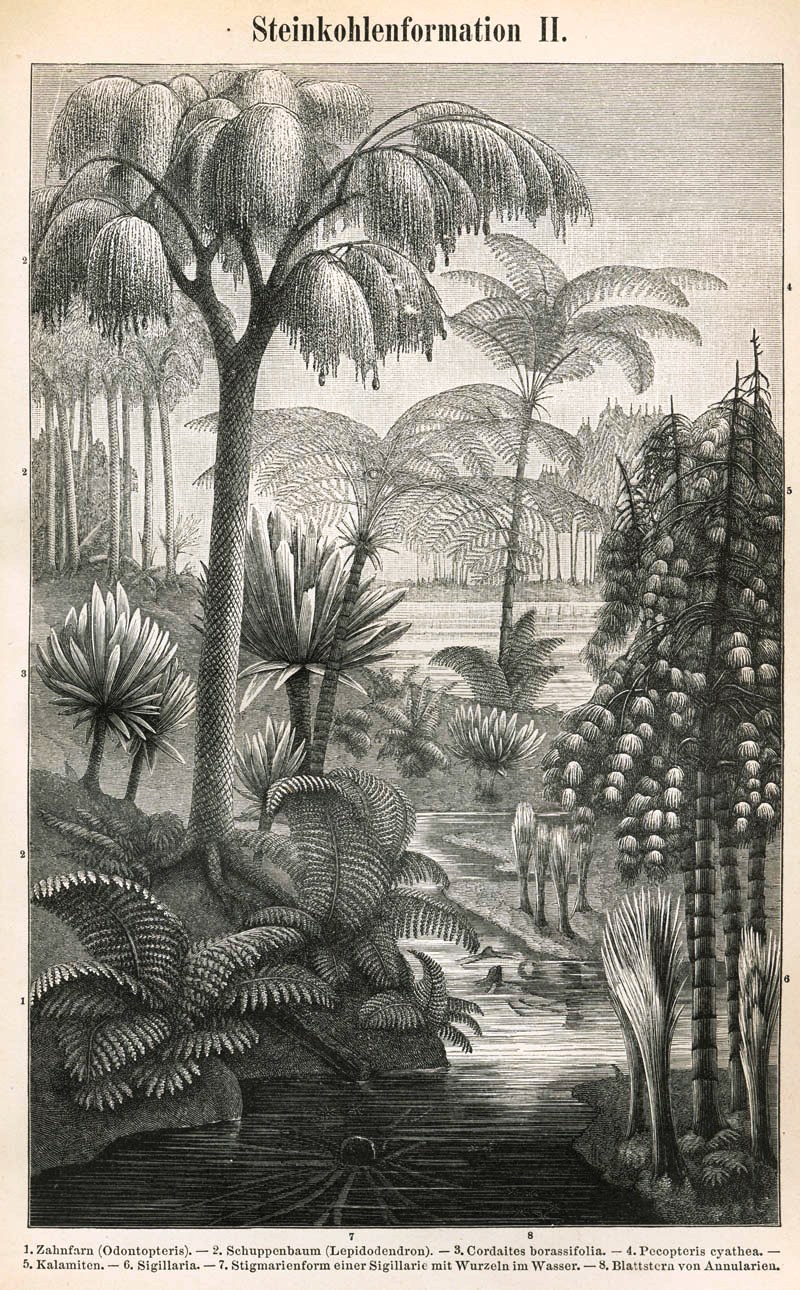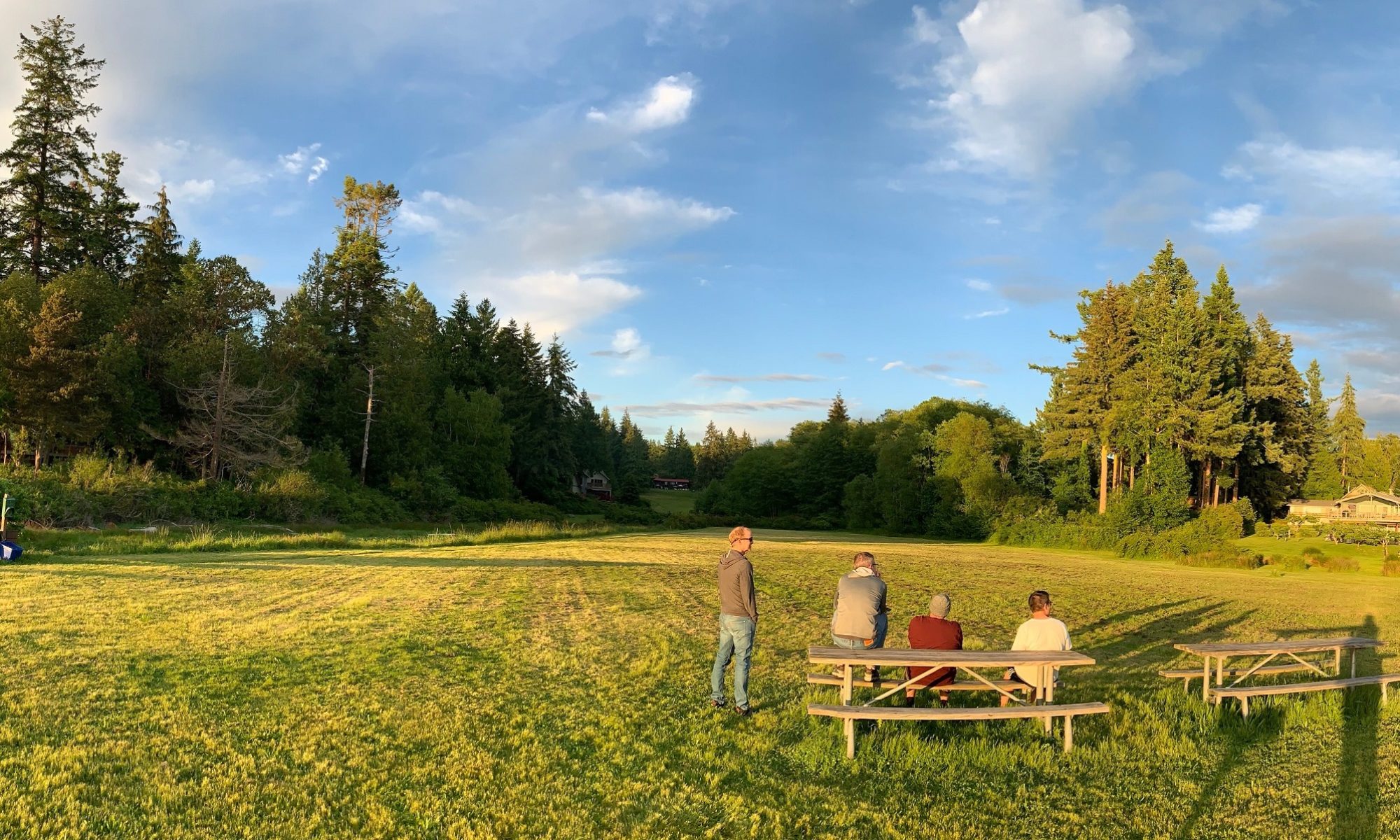
The Carboniferous is a geologic period and system of the Paleozoic that spans 60 million years from the end of the Devonian Period 358.9 million years ago, to the beginning of the Permian Period, 298.9 mya.
[Picture: Bibliographisches Institut – Meyers Konversationslexikon]
The Carboniferous* lycopod forests were not like this at all (trees with wood and bark). The lycopods, like their Devonian forebears, were hollow, supported by thick skin rather than heartwood, and covered in green, leaflike scales. Indeed, the entire plant— the trunk and the crown of dropping branches alike— was scaly. With no columns of vessels to transport food, each of the scales was photosynthetic, supplying food to the tissues close by.
Even stranger to our eyes, these trees spent most of their lives as inconspicuous stumps in the ground. Only when it was ready to reproduce did a tree grow, a pole shooting upward like a firework in slow motion to explode in a crown of branches that would broadcast spores into the wind.
Once the spores had been shed, the tree would die.
Over many years of wind and weather, fungi and bacteria would etch away at the husk until it collapsed onto the sodden forest floor below. A lycopod forest looked like the desolate landscape of the First World War Western Front: a craterscape of hollow stumps filled with a refuse of water and death; the trees, like poles, denuded of all leaves or branches, rising from a mire of decay. There was very little shade and no understory apart from the deepening litter forming around the shattered wrecks of the lycopod trunks.

a weblog of whereabouts & interests, since 2010